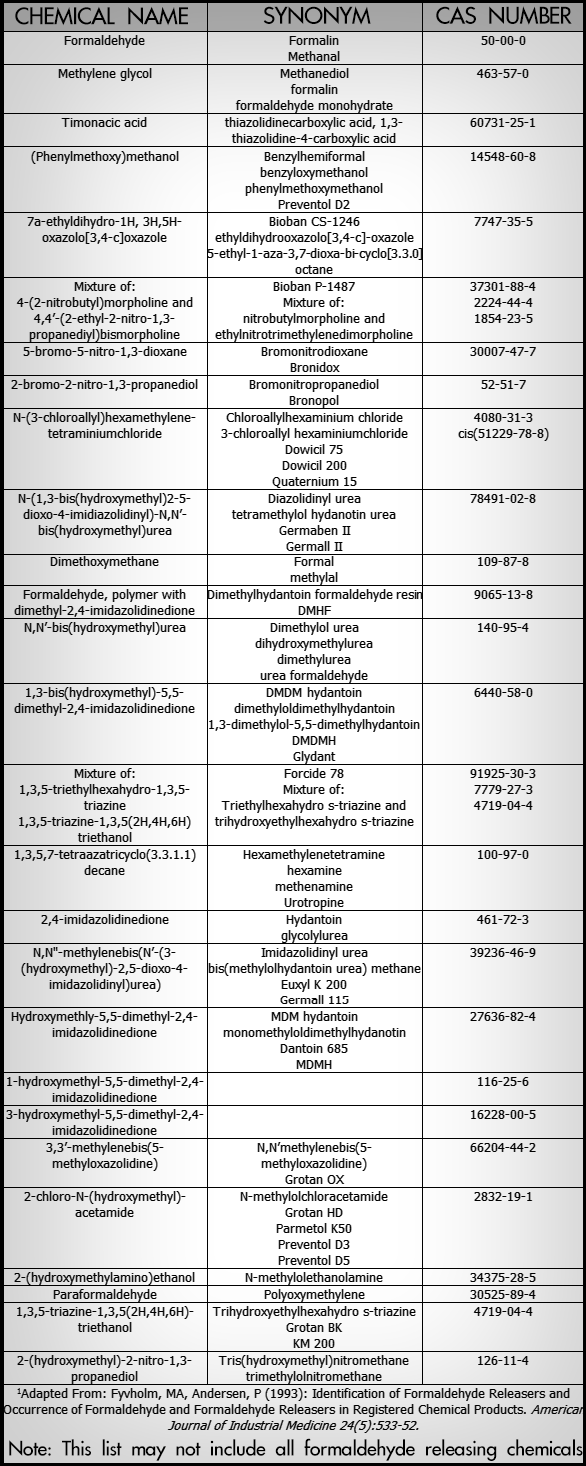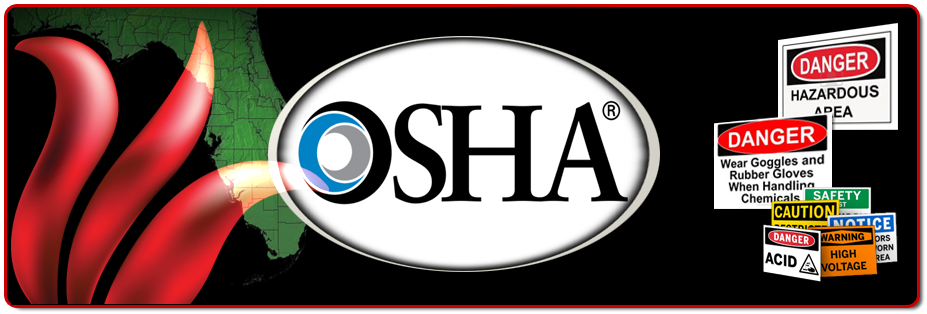OCUPATIONAL SAFETY AND HEALTH ADMINISTRATIVE REGULATIONS
OSHA : FORMALDEHYDE IN HAIR PRODUCTS
INTRODUCTION
OSHA has found that many hair smoothing products contain formaldehyde or METHYLENE GLYCOL, formaldehyde dissolved in water using products that contain these substances can result in worker exposure to unsafe levels of formaldehyde. As stated in an OSHA 2011 press release three salons were found using products containing methylene glycol and were exposed to formaldehyde above OSHA's 15-minute short term exposure limit (STEL) of 2 parts formaldehyde per million parts of air (ppm). In one salon, formaldehyde levels during the blow drying phase of treatment were measured at 10 ppm - five times the OSHA STEL.
FORMALDEHYDE IN HAIR PRODUCTS
A - PRODUCT LABELS and SDS ( SAFETY DATA SHEETS )
OSHA's Hazard Communication and formaldehyde standard require formaldehyde and other substances that can lead to formaldehyde exposure to be listed in two places for products: on the label of the product bottle or box and in the product's safety data sheets (SDSs), which are documents that explain the health hazards of products that contain hazardous chemicals and the recommended safe practices for working with them.
If a product contains 0.1% or more formaldehyde or releases at least 0.1 ppm of it into the air, manufacturers, importers, and distributors must include the following on the label:
- Notice that the product contains formaldehyde or may release formaldehyde.
- Name and address of the manufacturer, importer, and/or other responsible companies.
- Notice that employers and SDS can provide additional hazard information.
If a product can release more than 0.5 ppm of formaldehyde into the air, the label must also include:
A - List of all product health and safety hazards
B - The words "Potential Cancer Hazard”
B. Chemicals that CAN release formaldehyde
Formaldehyde and methylene glycol are not the only “ingredients” on a product label or SDS that will expose workers to formaldehyde. Stated on OSHA’s website, “Sometimes, manufacturers or distributors intentionally omit ingredients from labels or SDS. There are also other names for formaldehyde, and other chemicals that can expose you to formaldehyde when the product is used. These are listed in the table below, and are subject to the same OSHA rules as formaldehyde.”
CHEMICALS THAT CAN RELEASE FORMALDEHYDE

HEALTH RISKS OF FORMALDEHYDE EXPOSURE
The health symptoms reported include the following:
- Burning of eyes and throat
- Watering of eyes
- Dry mouth
- Loss of smell
- Headache and a feeling of “grogginess,”
- Malaise
- Shortness of breath and breathing problems
- Diagnosis of epiglottitis attributed by the stylist to their use of the product
- Fingertip numbness
- Dermatitis
PROTECTING SALON WORKER'S HEALTH
A. The Salon Worker: Steps to protect your Health
- Read the SDS for each product you use. Your salon must have this document and make it available to you. The SDS provides the most thorough information about product ingredients and associated hazards.
- Use available ventilation systems, such as fans and/or windows, and personal protective equipment; such as gloves, face shield, goggles, and chemical resistant aprons as necessary.
- Know the location of eye washing, skin washing, and other first aid equipment in your workplace. Learn the hazards of the products you use and how to safely clean up spills.
- Alert your employer and get medical attention if you develop symptoms of formaldehyde exposure, or if you know you've been exposed directly to large amounts of formaldehyde (such as during a spill).
B. THE SALON OWNER: EMPLOYER RESPONSIBILITIES
Failure to follow OSHA regulations regarding formaldehyde and hazard communication can result in citations and fines.
- If products containing formaldehyde are being used, salon owners must test the air and record results for employees. Salon Owners must keep records of any medical attention needed by their employees and respirator fit-testing.
- Install and maintain ventilation systems in areas where the products are mixed and used to keep formaldehyde levels below OSHA limits.
- Use work practices that may reduce exposures, such as requiring lower heat settings on blow dryers and flat irons. Ensure workers are using appropriate protective equipment such as gloves, goggles, face shields, and chemical resistant aprons at no cost to the worker.
- Provide workers with respirators at no cost to them and train them in proper respirator usage if ventilation and other work practices do not reduce formaldehyde levels below OSHA limits. If respirators are used, salon owners must also meet all other requirements outlined in OSHA”S 29 CFR 1910.134.
- Post signs warning workers that formaldehyde is present above OSHA limits and restrict access to authorized personnel.
SUMMARY
OSHA has guidelines that must be adhered to, in order to prevent over exposure of formaldehyde. This begins with the product label. As we now know, by reading the label we can safely determine any potential exposure. Further, we are now aware of the symptoms of over exposure and steps to take to protect our health and that of our clients, co-workers and employees. Failure to follow the guidelines set forth may result in poor health conditions, citations and fines.
WORKS CITED
- Keratin-Based Hair Smoothing Products And the Presence of Formaldehyde. (n.d.). Retrieved April 16, 2016, from https://www.osha.gov/
- Safety and health topics in the hair salon. (n.d.). Retrieved April 16, 2016, from http://www.osha.gov/
- OSHA News Release. (n.d.). Retrieved April 16, 2016, from https://www.osha.gov/pls/oshaweb/owadisp.show_document
-
Formaldehyde Hazard Alert. (n.d.). Retrieved April 16, 2016, from http://www.osha.gov/
- Hair smoothing products that could release formaldehyde. (n.d.). Retrieved April 16, 2016, from http://www.fda.gov/ICECI/EnforcementActions/WarningLetters

